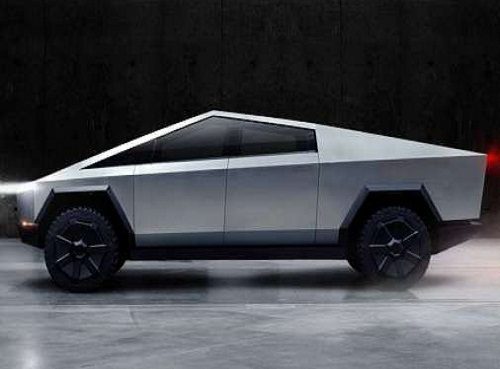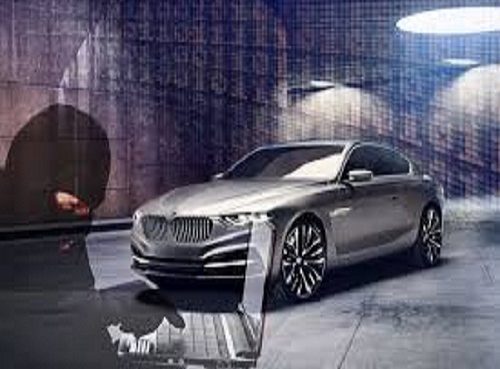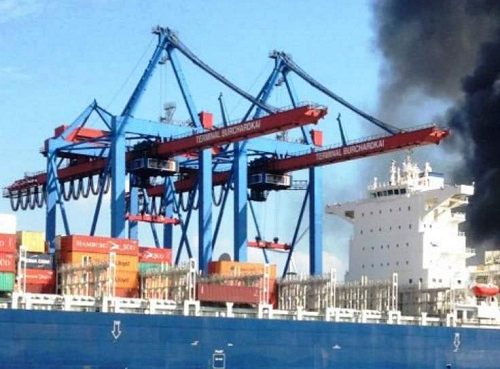We all grew up having our imaginations run wild from science fiction movies on what the future would look like. There are myriads to recall but growing up, I remember thinking that flying cars and personal assistant robots would be the future.
It’s 2020, while we are still working to introduce flying cars to the neighbourhoods, we’ve managed to bring in robots to remind us to keep a safe distance – it’s not quite what we imagined but it’s close!
While we have the brightest minds and entrepreneurs working on these groundbreaking inventions, predicting far into the future is hard to get right. As we discovered in recent months, all it takes is one new discovery or world event to change the course of history.
So instead of predicting the future through my imagination and ideals, another way to look at it is through the lens of opportunity. Great problems and opportunities often attract the best minds to work together to solve them.
My firm belief is that when the best of various fields come together to work across disciplines, amazing progress and breakthroughs happen. To answer the question about what our smart cities of tomorrow will look like, here are some of the opportunities that are worth looking at and should be making good progress in the next 10 years:
Better use of data
Millions of data points are being collected daily and it’s continuing to expand as IoT devices proliferate our cities. The data collected will help us to understand patterns and identify behaviours that are changing as well as how they interrelate.
Utilising the data sets collected would help us to make better decisions in our solutions and improve the quality of our lives. Startups that can harness the data and create meaningful innovation stand a good chance to solve or improve our traffic, energy usage, safety, and social challenges.
Smart home and IoT security
Smart connected homes are growing at an incredible pace as we continue to add on devices to make our lives at home better. Global forecasts put it that the number of smart homes would increase by 2.6 folds, up from 180 million in 2020 to mind-boggling 480 million households in a short span of five years.
With this proliferation, the importance of keeping our home safe and secure is more important than ever, unscrupulous actors would now be able to compromise the integrity of the smart home system and exploit security loopholes without the need to be physically present. Perhaps subscribing to an anti-virus service for our homes in the future is not too far-fetched an idea?
Sharing economy
In the last five years, we’ve had a wave of startups working on ideas revolving around the sharing economy. The trend seemed to have tapered recently, possibly due to the number of challenges and stakeholders involved in the sharing economy ecosystem.
Uber has been one of the leaders in the sharing economy yet they too faced an incredible amount of challenges in their journey to revolutionise the mobility industry. No doubt, we have seen successful cases i.e. Airbnb but the recent COVID-19 pandemic disrupted the company’s plans and is forcing them to adapt to stay relevant to new norms.
Closer to home, we have seen startups attempting to tap into the sharing economy in various industries i.e. bike-sharing, last-mile transportations, and freelance-gigs, but we’ve yet to see much success due to various factors.
Just two years ago, we had six companies offering a total of approximately 200,000 dockless shared bicycles around Singapore, but most of them shut down by 2019. I’m sure all of us recognise that there is much efficiency to be gained from unlocking utilisation of assets through sharing, but the implementation will need to be a win-win for the idea to take off and truly be successful.
While no one seems to have cracked the code of maximising the potential of the sharing economy, the recent resurgence in companies looking at bike-sharing in Singapore seems to indicate that there is a huge potential in this market waiting to be tapped on.
In the next ten years, we should see more startups learning from past mistakes and making a comeback to tackle the sharing economies in better and more innovative means.
More efficient home cooling
In tropical climates, living without air-conditioning would make many of us miserable. As the planet warms and more of us continue to work from home, usage is definitely on the rise and projected to double in the next 20 years. Did you know that air-conditioning accounts for almost 40 per cent of the total electricity consumed in Singapore homes?
Providing cooling is expensive and demanding on the power grid, and district cooling is among one of the best options to improve efficiency. It works by aggregating demand among multiple buildings that combine different usage patterns.
District cooling works well with solar and other renewable energy sources, which adds on to its appeal. While this is not something entirely new, there may be more focused implementations and hopefully further efficiency breakthrough within the next 10 years.
Last-mile delivery
As the demand for e-commerce and parcel delivery surge, how will this affect last-mile delivery? Our current infrastructure and logistics operations are not built for future projected growth.
With only 20 per cent of all sales happening online, there is much room for e-commerce to grow. Startups will continue to figure out how to deal with this increase at scale. Is there a possibility that drones and robots may very well be the future of delivery services?
Sustainable living
It’s undeniable that humanity has made much progress in the last 10 years, but the advances will mean nothing if we do not leave a better world for our future generations. Our cities today consume more than 60 per cent of the world’s resources, contribute to 70 per cent of greenhouse gas emissions, and account for 70 per cent of global waste which all leads to the devastating impacts on the very place that we live in.
To accommodate this growth sustainably, our smart city will need to address traffic congestion, air pollutants, and waste processing. Over the last 15 years, HDB has been introducing various solutions to drive sustainability efforts in our estates.
We have been harvesting rainwater for non-potable uses like washing of common areas, introduced smart motion sensors that automatically adjust the luminosity of the LED lights depending on the motion detected, and is currently piloting the Pneumatic Waste Conveyance System (PWCS) an automated waste collection system to solve environmental and sanitary issues associated with open refuse collection.
As more of us are aware of the importance of preserving our environments and understand the importance of sustainable growth, more attention will be shined on startups working on sustainability goals and will continue to attract investments. Sustainability would without a doubt be an overarching theme that will shape the future in the next 10 years.
So what do you think future estates will look like? If you visualise a very different smart city from the one we live in now and have some great ideas worth building, join us at the HDB Cool Ideas Hack 2020 to ideate with the best minds, build a prototype and bring those amazing ideas to fruition.
Source: e27










